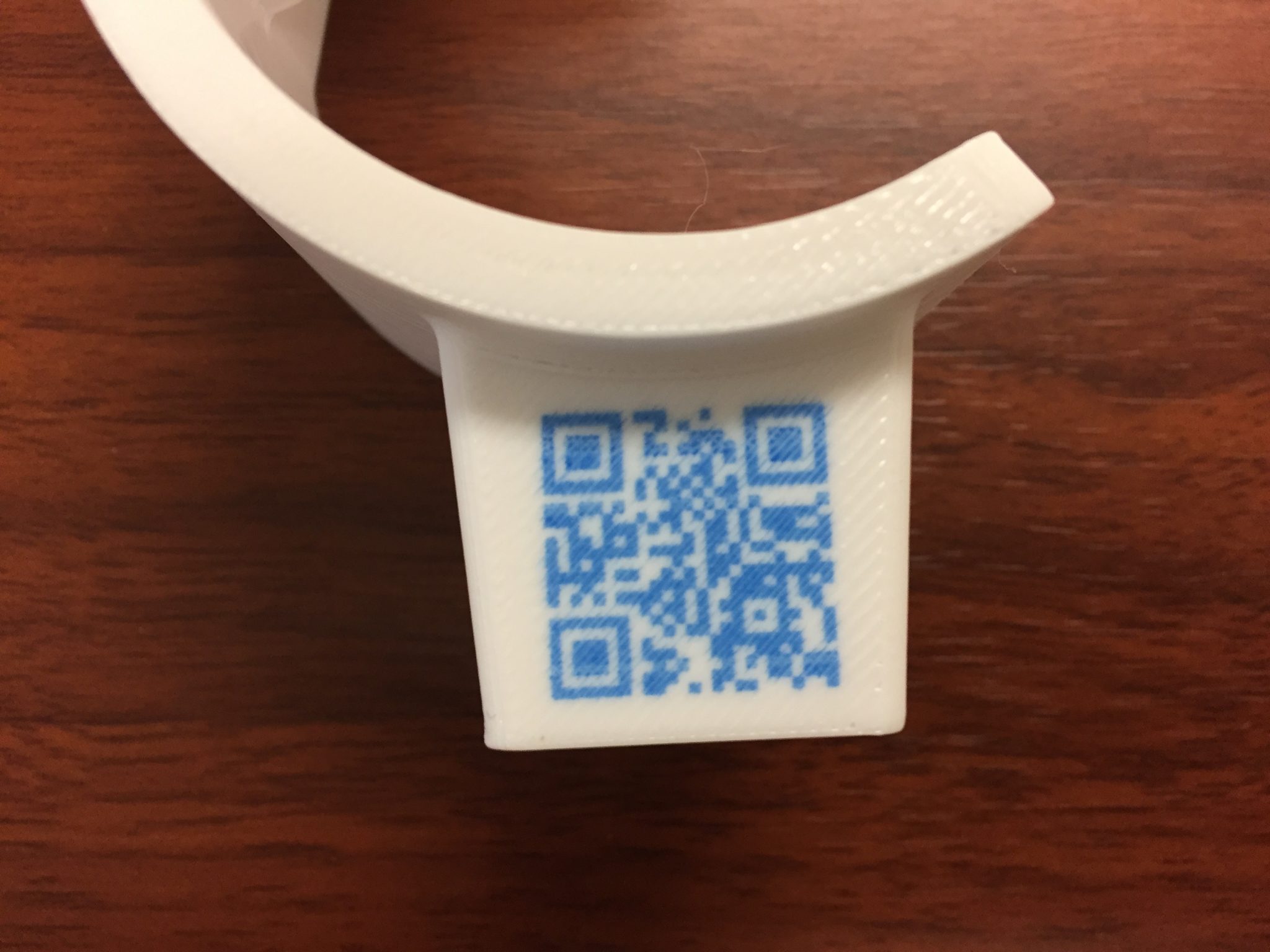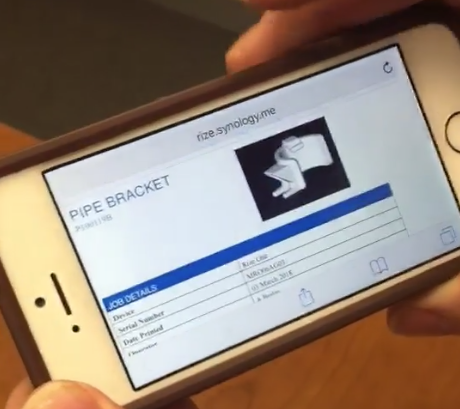Boston, U.S. based 3D printer manufacturer Rize Inc., has introduced what they are calling the first 3D printed Digitally Augmented Parts (DAP).
According to Rize, DAPs will enable the creation of “functional 3D printed parts with digital information” using Rize’s patented Augmented Polymer Deposition (APD) method to embed markers, such as QR codes, on plastic components.

The first step towards embedding intelligent capabilities
Julie Reece, Rize’s VP of Marketing said “A significant challenge in the additive manufacturing industry are parts that are non-compliant due to design changes, piracy, counterfeit and obsolescence, that adversely impact the user and customer experience and result in rework, recalls and loss of brand value.”
DAPs are Rize’s attempt to address this challenge. Using APD’s voxel-level ink jetting capability, QR codes can be fused into a part, allowing a smartphone app to scan the QR code and receive information about the part online. Coded information could include material composition and details of where and when the part was 3D printed, as explained by the official PR, the APD process “embeds Digital Rights Management into isotropic-strength, functional 3D printed parts, for compliance, authenticity and traceability.”
“This is the first step towards embedding intelligent capabilities within the part and connecting them through a digital thread into the digital twin of the part,” said Andy Kalambi, CEO of Rize.
Rize will be demonstrating the capability to produce DAPs this week, April 8-12, at the Additive Manufacturing Users Group (AMUG) conference at the St. Louis Union Station Hotel in Missouri, U.S.

Combatting counterfeiters
In an article written for 3D Printing Industry, Andreas Leupold, author of the book 3D Printing: Law, Business & Technology, said “3D printing will continue to make it easier than ever for counterfeiters to create exact copies of products, as all that is needed for this are the 3D model, a 3D printer and sufficient experience with additive manufacturing processes.”
Other 3D printing companies are addressing the issue of piracy. Danish 3D printing research company Create it REAL has developed a platform for 3D printers with a focus on IP protection. The platform allows users to 3D print an encrypted model without access to the original 3D file. Last year, Renishaw began collaborating with Identify3D to apply manufacturing licensing and data protection measures to Renishaw’s 3D printers.
Get the latest 3D printing news as it happens. Subscribe to the 3D Printing Industry newsletter, follow us on Twitter and like us on Facebook.
Vote for the 3D printing companies of the year in the 2018 3D Printing Industry Awards.
Advance your career in 3D printing, or post a job. Our 3D Printing Jobs service is now live.
Featured image shows a QR code embedded into a 3D printed part. Photo via Rize.

